Das Erbe der Giganten
deutsch english español français
· 1977/2021 Uwe Topper ![]()
The first book by Uwe Topper;
Das Erbe der Giganten
published 1977 by Walter Verlag, Olten/Switzerland

(The Heritage of the Giants)
1
The first book by Uwe Topper
A book that was written fifty years ago and whose author during this half century worked hard in further research and also wrote new books on this topic, such an old book that also contains outdated or even contradicting statements, - can it still be offered or even defended?
The book, maturing slowly for about ten years since 1964, then the "finished" manuscript waited another two years in the publishing house - a respected Swiss editorial that has published several well-known books on this subject, prehistory and early history (e.g. Otto Muck) and which appeared on time for the 1977 Frankfurt Book Fair, where we (my wife, the publisher Mr. Rast and I), were posing as proud explorers. It was sold in several editions, even as a paperback (30,000 copies at Lübbe Archeology) but, alas, as far as I know, never translated.
The long process of maturing had been good for the final shape of the book. On many journeys, field research and discovering ancient books I was able to underpin the unusual ideas and develop them into a full grown hypothesis: the western European continental shelf had been flooded by the sea in prehistoric times whereby all buildings and evidence of civilization vanished and only reappeared in three stages over the course of millennia.
2
Chronology
When did the disaster and the three uplifts occur?
The dating question is the most difficult. I answer them differently today than I did back then. At that time I took Plato's dating of the Atlantic Empire for granted, and so did, by the way, many other Atlantis researchers: 9000 years before Solon, Atlantis was drowned. That is around 11,600 years before present. It wasn't until twenty years ago that I found out where Plato's fault in dating lay. He had used precession values in calculating the age (or adopted it unquestioned from others) without taking into account that the celestial bodies (sun and planets) did not always orbit regularly (which Solon emphasizes in the same report!). By large gaps through cosmic jumps the time-scale of precession was drastically shortened. A retro- calculation by precession standard values caused gross errors (for details see "Jahrkreuz" p. 166-69, and an article in Bernhard Beier, Atlantisforschung.de as well as here: Astronomical dating controversial.
The second question which also moved all Atlantis researchers and produced various solutions: What caused the catastrophe by which the Atlantean culture was destroyed?
Very often a planetoid (asteroid), meteorite or comet is mentioned which supposedly hit the earth and caused unspeakable devastation. However, Plato's text does not assert that but says something else, even though the Kritias' dialogue breaks off at this point.
In the book I initially correctly gave the cause according to Plato's Kritias:
You may treat it like a fairy tale, says the Egyptian priest to Solon, but the truth about it is real: The stars circling around the earth in heaven destroy what is on earth with mighty fire, so that distruction comes through orbit deviations."
But then, following the general view, I claimed that as the cause of the catastrophe a body (Phaedon) struck earth and also caused a change in the position of the earth's axis. Physicist Prof. W. Zarnack cured me of this physically completely impossible thesis in 1999. (Read the section "Pole Shift" on Chronologo hier.
Instead, I assume (elaborated in Kalendersprung 2006, from p. 32) that a jolt in the planetary system, which originated from a jerk of the sun, briefly interrupted the rotation of the earth and not only triggered devastating tidal waves and shelf movements, but also confused retro calculation of the past years with the help of the precession movement, which ultimately results in an unrealistic high number of years Plato believed (see above: “9000 years”).
3
Let's move on to the third point:
Where was the capital of Atlantis, Basileia?
Here I am not ready to revise my discoveries on the Iberian Peninsula starring the rocky island of Cádiz as the primeval capital, not far from the pillars of Hercules on the Atlantic Ocean coast.
I have only learned this much in the meantime: Plato's reports are idealized and patched together from several originally unrelated parts, which is why a direct transfer of the Plato texts to archaeological finds is only possible to a limited extent. This is what Gisela Albrecht taught me in particular (VFG 1994) see "Jahrkreuz" (2016, p. 166 ff).
Figure 1: Aerial view of Cádiz, the former island Basilea, with the three ports
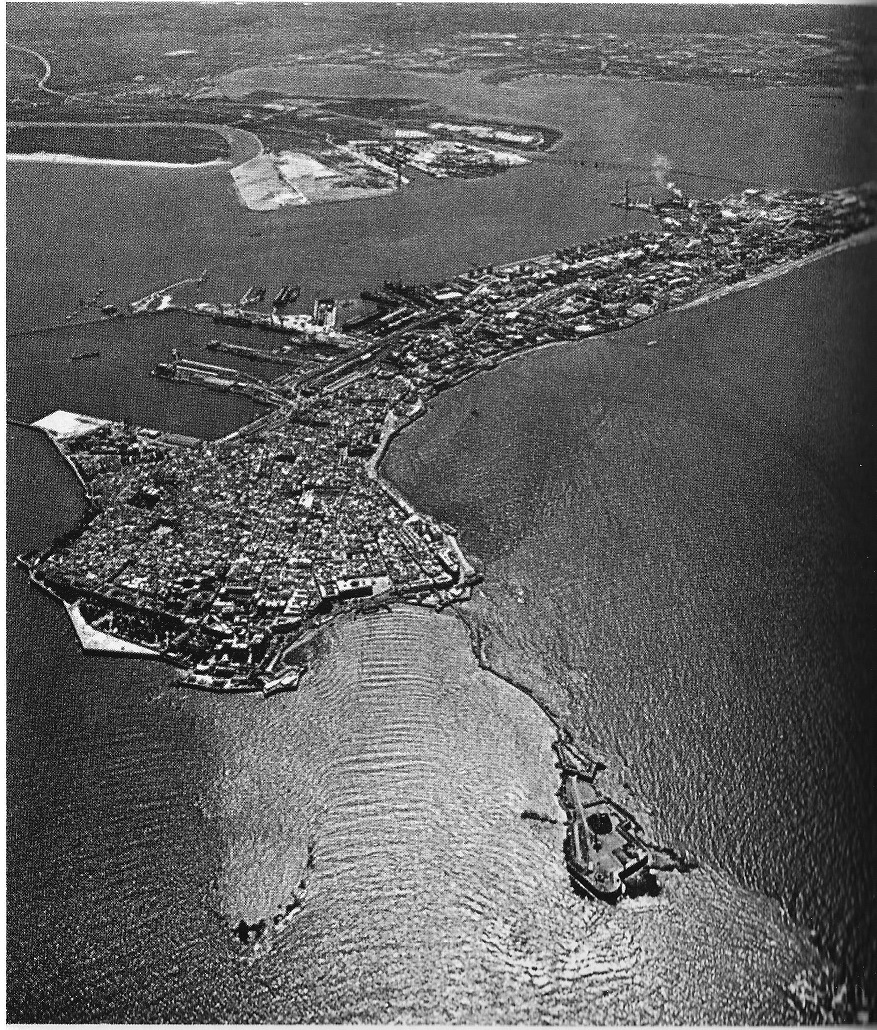
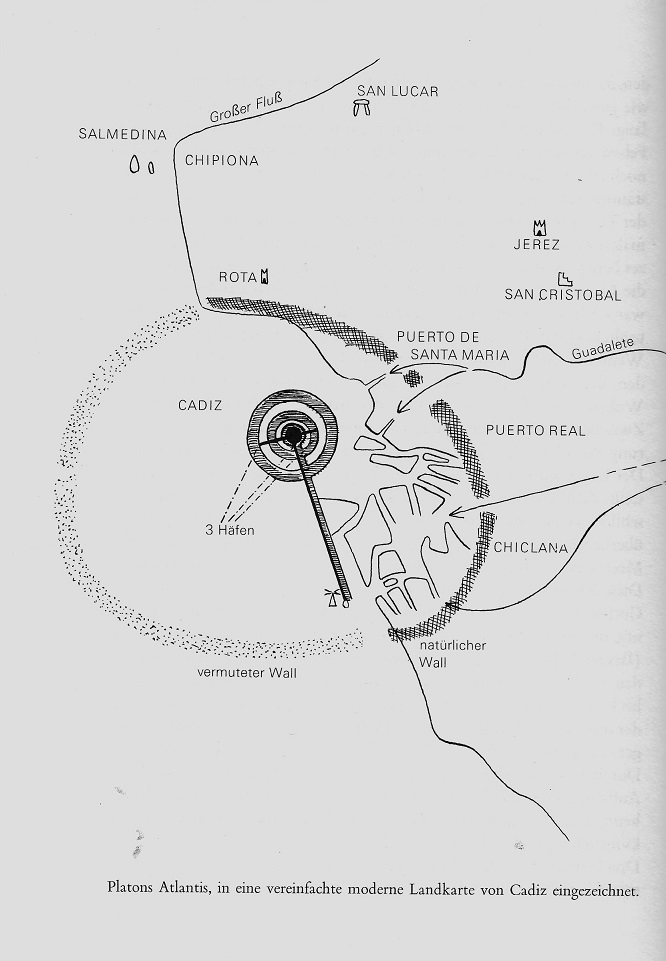
figure 2: The location of Basilea as the re-emerged rocky island of Cadiz.
If you skip the completely absurd localizations of the capital Basileia on a Mediterranean island (e.g. Thera), then there was at times a serious competitor for Cádiz: Heligoland in the North Sea. Unfortunately, during my research I did not yet know Jürgen Spanuth, only briefly his book from 1953 and the review of Spanuth's theses by Gadow (1973) (mentioned in “Erbe” p. 51 and p. 250-2). I missed his extensive book “Atlantis” from 1965 (I received it as a gift from W. Zarnack in 2000), in which he expertly evaluates the ancient reports of catastrophes. Even if many of his comparisons and conclusions are plausible to me, e.g. that the warriors depicted on the temple walls of Medinet Habu in Egypt come from the north, probably from the North Sea coast, and because of their armament (riders, chariots, swords, etc.) belong to the well known Nordic Bronze Age, there is a dating contradiction here: Heligoland could not have been Basilea, the Atlantic capital with the three ports, because at that time (Spanuth works strictly with 1200 BC) the North Sea coast lay much further north ; if, like Spanuth, you relate the Platonic description of the Wadden Sea to the area around Heligoland, you are focussing a much more recent phase.
Spanuth dates the attacks of the North Sea peoples on the eastern Mediterranean by the ceramic shards that were found in the fountain complex of the Acropolis of Athens. He is not aware of the problem this relative time determination comprises. Nor does he question the governing data of the Pharaohs ("Ramses III"), although these have always been questioned. From several approaches he always reaches the year 1200 BC. and sees himself here on solid ground, as the data confirm each other. An example: for him there lay 400 years between the comet Typhon and the author Hesiod (1965, p. 162). Both dates are unwarranted, and moreover, the comet Typhon is equated with Phaeton (Ovid's solar event) (p. 159). Spanuth is careless about chronology.
4
The river Eridanos
To suggest the Schleswig-Holstein river Eider as Eridanos, as Spanuth does, is only popular because a lot of amber was found on the Eider. But the interpretation of Plato's “Oreichalkos” (shiny mountain ore) with amber, which led to this localization, is untenable because this material is said to have been a "type today known only by name", which is not the case in ancient Greece, where amber was a popular jewelery. And if you wanted to cover a 3 km long and 30 m wide wall with this material, then this interpretation fails. For me, Oreichalkos is probably steel, and the Eridanos flows into the Atlantic Ocean as river Guadi-Anas ("Erbe" p. 51 and 96).
5
The worldwide mission
Wisely, my publisher, Mr. Rast, insisted on not including the stimulus word Atlantis in the title of the book (only on the back cover), because it brings a lot more discoveries than just the sensational explanation of where Plato's island was to be looked for. Partly the book is a travelogue that leads through the early Iberian civilization as nobody knew it before. I visit the center of the megalithic culture in Andalusia, as testified by the gigantic walls of the former port of Pennaflor deep in the country (Prov. Córdoba) (p. 177 and fig. P. 165, with author and two sons). Or the description of the Cueva de Menga of Antequera (p. 367), the largest dolmen in the world; in comparison, our north German megalithic tombs look like scaled-down imitations or primitive preliminary stages. In any case, the impression will not be wrong that the archetypal large stone buildings are to be found in Andalusia.
From this I follow that the expansion of this stone architecture, "the worldwide mission" (chap. 12, p. 227), must have started here. On my long journeys I came across the dragon boats as images and symbols on many rock faces and gravestones (figs. n the book, p. 230 ff).
The rock tracks (chap. 11, similar to Maltean cart ruts but much more impressive) were another surprising find, especially at the entrances to ancient cities (Termancia, Meca, Castelillo de Alloza and Cádiz), which no one yet had seen and described en detail. The sites have in common that they give evidence of prehistoric ore mining and smelting, presumably of steel. While the gorge-like entrances to the old cities are to be seen as marvellous pre-roman efforts of which we had no konowledge for this early civilization, the tracks on bare ground like in the foto below remain a puzzle.
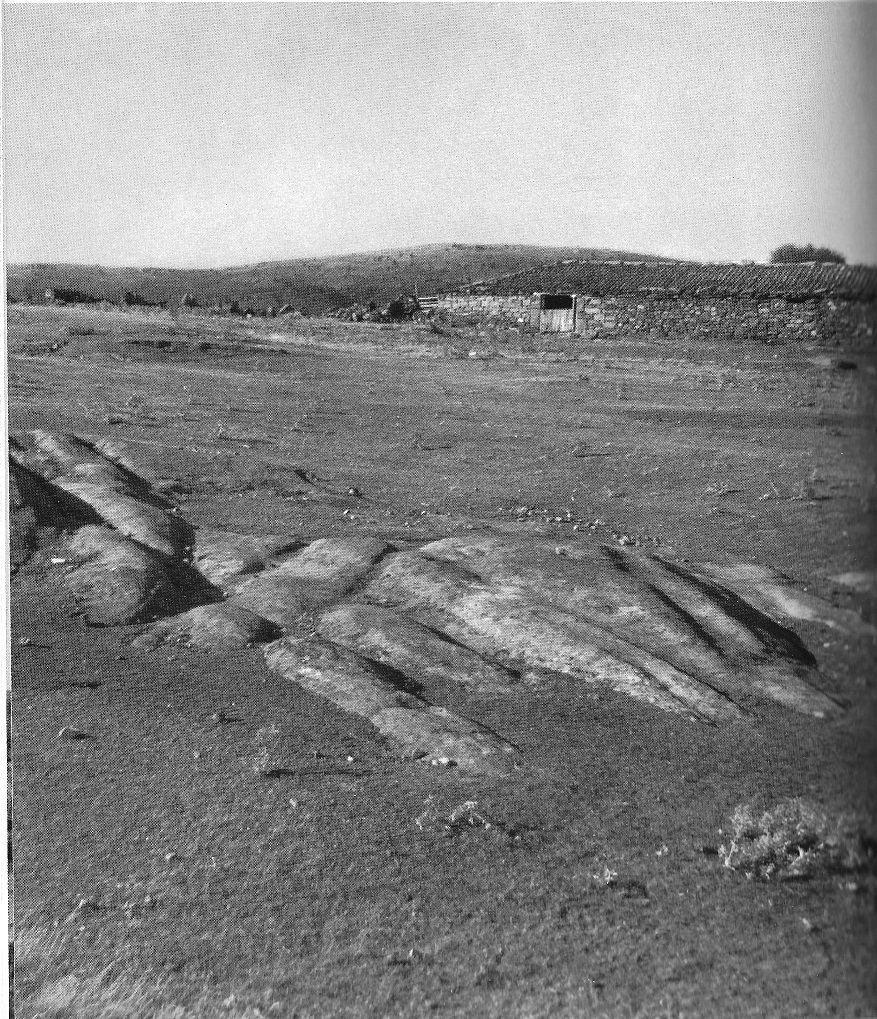
In the meantime, this branch of my discoveries has become wellknown and is also noticed on the Internet (see here with plans and fotos and more recent articles from 2016).
Another discovery were the towers for messaging, which I followed far across the country to insert them on maps. I saw them as impressive evidence of two high culture phases in Iberia.
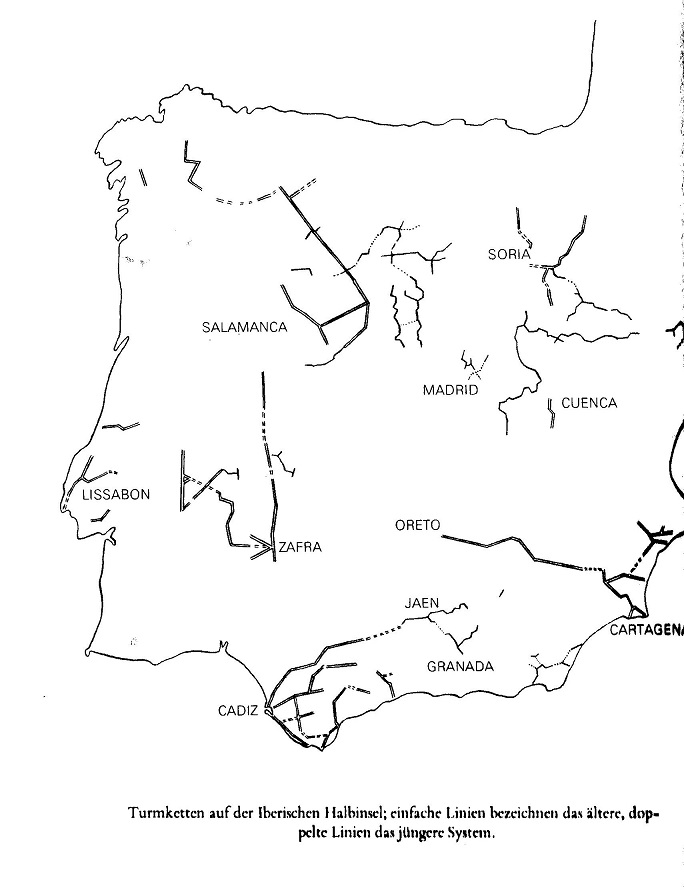
Figure 5: Two phases showing chains of towers in Spain.
6
Rising of the shelf
Finally, there are the coastlines, which can be seen all along the mountains, but which no one had bothered to mention until they were encountered. They were proof to me of the three land upheavals that I then found also in other areas (Morocco), which testifies to the extent of the geological impact of the disasters. It was difficult to determine the characteristics of the jerky rise or fall of the shelfs, their inclination, their extent, which can be made visible in the terrain. The archaeologists who had previously followed such references saw it all too easy: The sea level had fallen or risen by x cm in so many thousands of years. The complex movements of the individual fragments escaped them and led to incorrect conclusions about the earlier coastal formation.
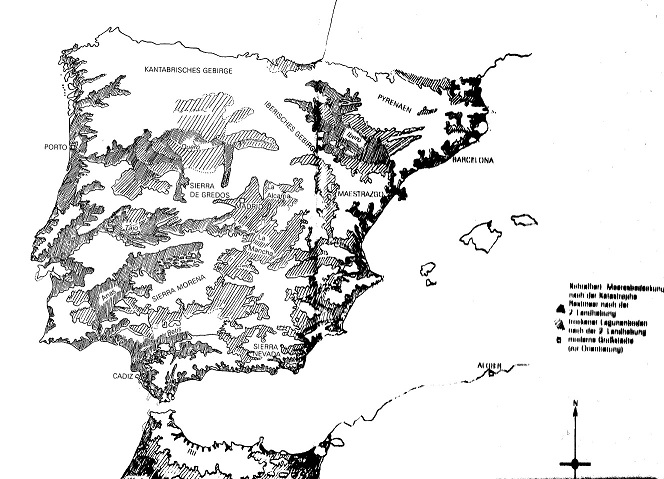
Figure 6: Map of the Iberian Peninsula with two levels of land uplift.
In Andalusia we discovered numerous rock paintings, mostly schematic symbols, which are an early stade of standardized writing. They were first published in German in IPEK by Prof. Kühn and in the yearbook of DAInst Madrid, then also in Spanish (1988) by the provincial administration of Cádiz.
The theory I developed in this context of the evolution of letters in the time of the first blacksmiths (pp. 283-87) needed some time before it could be published in a separate book about the early metal age: "horra. The first Europeans" (2003).
As a further indication that my localization of Atlantis must please Plato, I consider some proper names mentioned there such as Atlas, Gadeira, Poseidon and Olisippo, which only fit Iberia, while they make no sense in other places, neither on Heligoland nor on Thera.
The "Erbe" contains much more (it has 428 pages), some subjects have not even been touched upon here. And of course some pages could be omitted, e.g. the entire last chapter (22: Chronicle). that deals with Nanni's forgery, which I only recognized as such years later (see “Die Große Aktion” 1998, chapter 5). Or the timetable (p. 416-17), which not only looks monstrous today, but also in parts does not stem from me.
As I have been assured quite often, the book is best suited as a help on research trip. You can follow the discoveries in parts and "experience" an unknown culture in the early days of Iberia, which still holds further secrets.
Uwe Topper, Berlin, May 2021
References : The list of references in the book features about 160 titles.
Some references to this article:
Albrecht, Gisela (1994): Atlantis - streng nach Platon (VFG 4-94, Gräfelfing)
Beier, Bernhard: www.Atlantisforschung.de
Friedrich, Horst (1989): Velikovsky, Spanuth und die "Seevölker"
Muck, Otto H. (1956): Atlantis, die Welt vor der Sintflut (Olten)
Spanuth, Jürgen (1965): Atlantis (Grabert, Tübingen)
Topper, Uwe (2003): horra. Die ersten Europäer (Grabert, Tübingen)
(2004): Eine Chronologie für Atlantis
![]() I would like to write a comment to this text:
I would like to write a comment to this text: